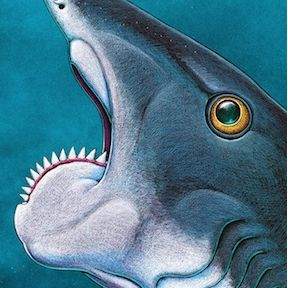Using CAT scans, Idaho State University researchers have made 3D virtual reconstructions of the jaws of the ancient spiral-toothed fish Helicoprion.

This 270-million-year-old fish has until now been something of a mystery: its skeletal system was made of cartilage, which doesn’t preserve well. Generally, the only part to survive is the creature’s bizarre teeth, which look similar to a spiral saw blade.
“New CT scans of a unique specimen from Idaho show the spiral of teeth within the jaws of the animal, giving new information on what the animal looked like, how it ate,” says ISU associate professor of geosciences Leif Tapanila.
“We were able to answer where the set of teeth fit in the animal. They fit in the back of the mouth, right next to the back joint of the jaw. We were able to refute that it might have been located at the front of the jaw.”
These teeth were saw-like, with the jaw creating a rolling-back and slicing mechanism. Helicoprion probably ate soft-tissued prey such as squid, rather than creatures with hard shells.
The team’s also established was that the fish, previously presumed to be a shark, is actually more closely related to the ratfish. Both are fish whose skeleton is based on cartilage rather than bone.
“It was always assumed that the Helicoprion was a shark, but it is more closely related to ratfish, a Holocephalan,” says Tapanila. “The main thing it has in common with sharks is the structure of its teeth, everything else is Holocephalan.”
The scans have also helped the researchers reconstruct the rest of the creature. Based on the 3D virtual reconstruction of its jaw, they’ve concluded that this particular specimen was around 13 feet long; it probably grew as large as 25 feet.






